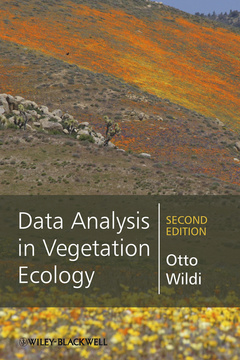The first edition of Data Analysis in Vegetation Ecology provided an accessible and thorough resource for evaluating plant ecology data, based on the author&rsquo,s extensive experience of research and analysis in this field. Now, the Second Edition expands on this by not only describing how to analyse data, but also enabling readers to follow the step–by–step case studies themselves using the freely available statistical package R. , , , The addition of R in this new edition has allowed coverage of additional methods for classification and ordination, and also logistic regression, GLMs, GAMs, regression trees as well as multinomial regression to simulate vegetation types. A package of statistical functions, specifically written for the book, covers topics not found elsewhere, such as analysis and plot routines for handling synoptic tables. All data sets presented in the book are now also part of the R package &lsquo,dave&rsquo,, which is freely available online at the R Archive webpage. , The book and data analysis tools combined provide a complete and comprehensive guide to carrying out data analysis students, researchers and practitioners in vegetation science and plant ecology. Summary: A completely revised and updated edition of this popular introduction to data analysis in vegetation ecology Now includes practical examples using the freely available statistical package &lsquo,R&rsquo, Written by a world renowned expert in the field Complex concepts and operations are explained using clear illustrations and case studies relating to real world phenomena Highlights both the potential and limitations of the methods used, and the final interpretations Gives suggestions on the use of the most widely used statistical software in vegetation ecology and how to start analysing data Praise for the first edition: ,&ldquo,This book will be a valuable addition to the shelves of early postgraduate candidates and postdoctoral researchers. Through the excellent background material and use of real world examples, Wildi has taken the fear out of trying to understand these much needed data analysis techniques in vegetation ecology.&rdquo, Austral Ecology




